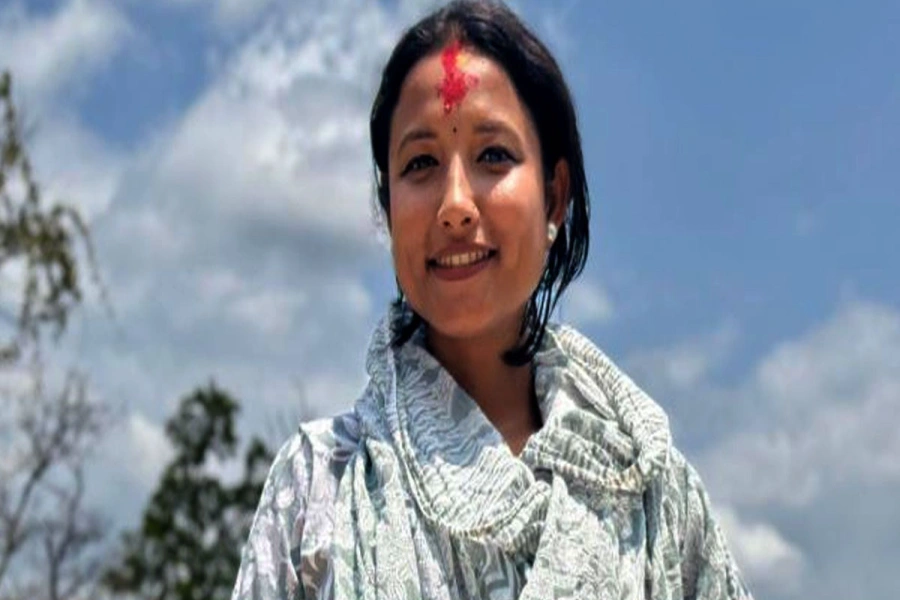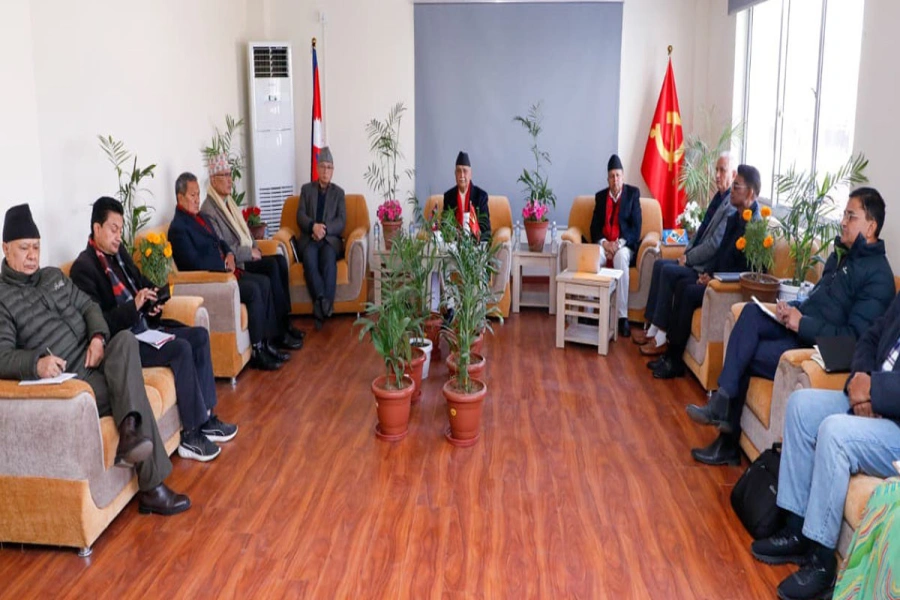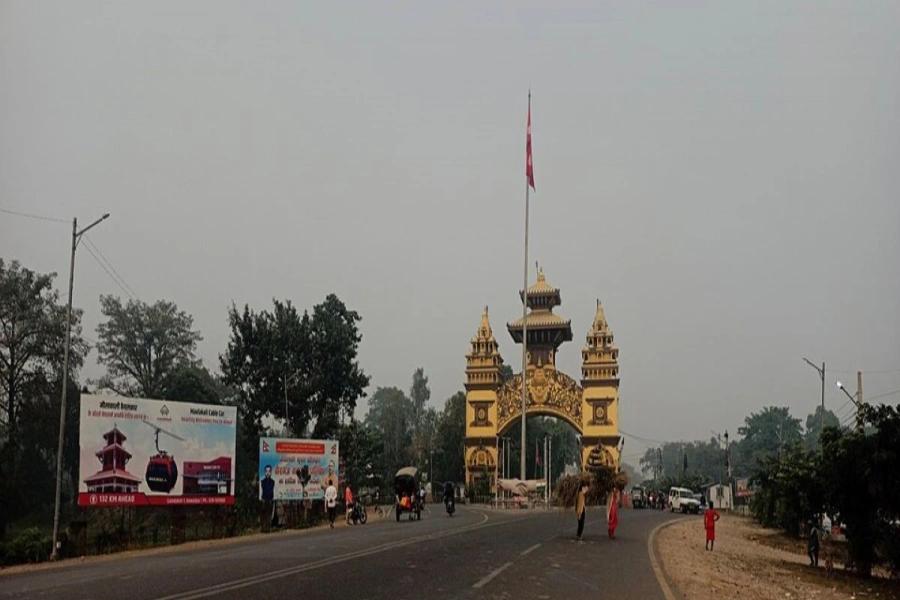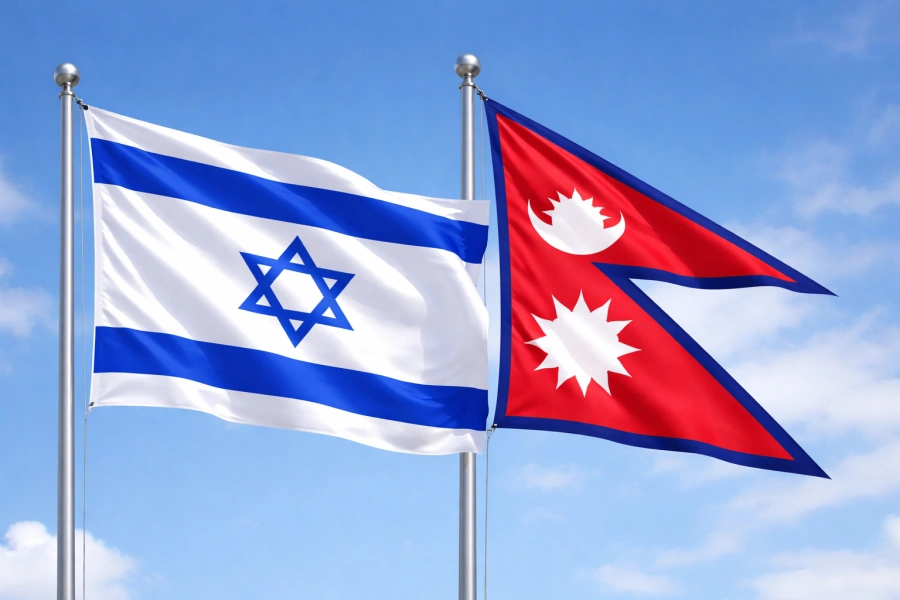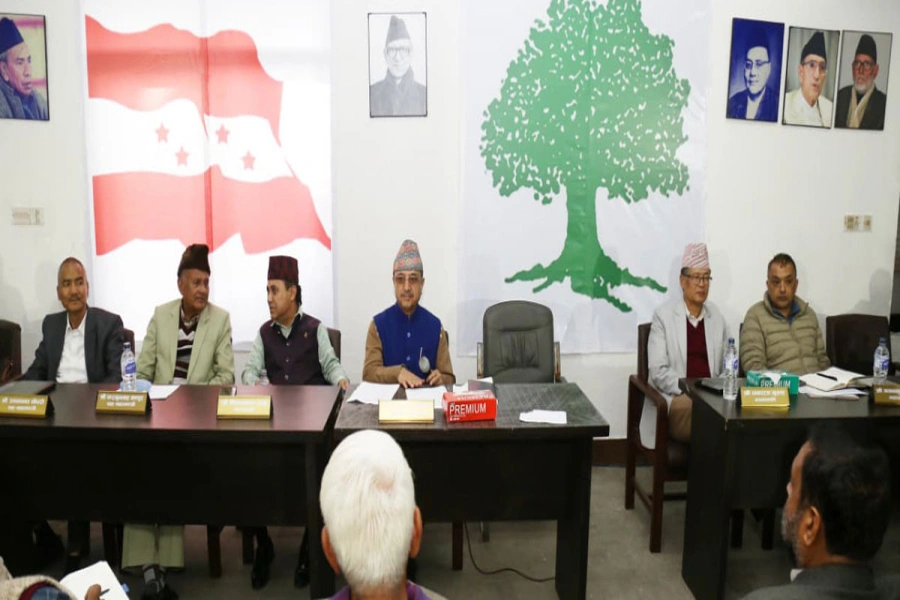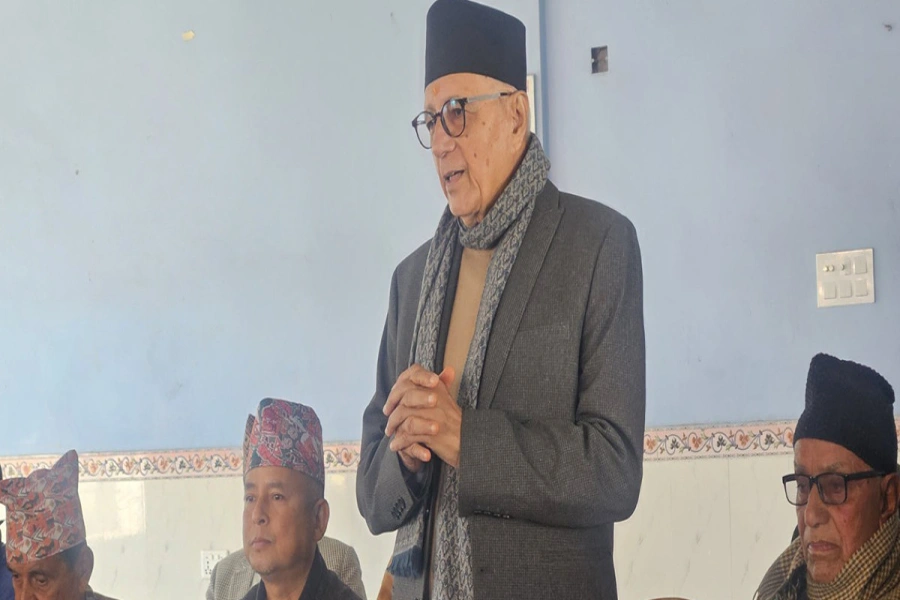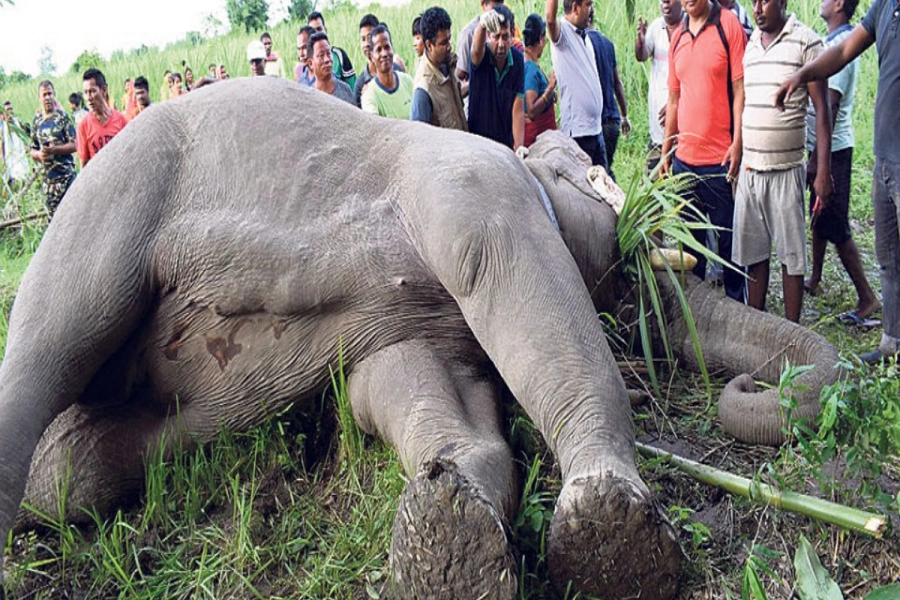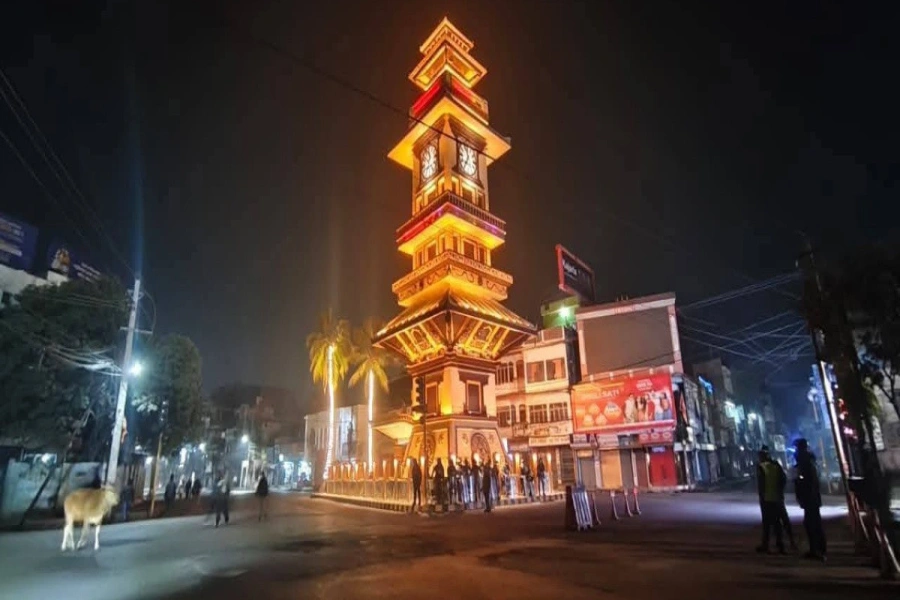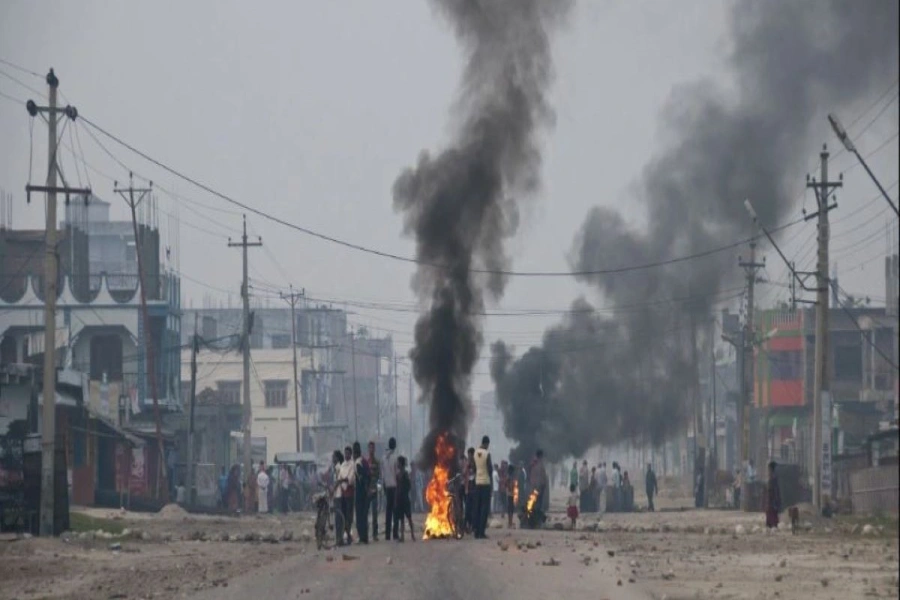For Janak Raj Sapkota, notion of dukhha is engrained in entire mobility process and migrants are in a Catch-22 situation as they can neither return to their village nor live in their new set-up
The trend of popular history writing is on the rise in Nepal. Leaving the professional academicians behind, the publications from journalists is showing up one after another. These publications provide a kaleidoscopic view in understanding the myriad aspects of the past and present of Nepali society. Janak Raj Sapkota’s book Nepali Upanysma Basaisarai: Dukha Dekhi Dukha Samma (“Migration in Nepali Novels: From Hardship to Hardship”) historically unfolds the issue of Nepalis mobility which has been captured in published Nepali literary texts. Sapkota has emerged as a seasoned journalist covering the issue of migration—especially out-bound. In the work under review, Sapkota has taken an ‘unusual’ step of engaging in charting the trajectory and history of Nepali migration through these literary texts.
Published jointly by Himal Kitab and Center for the Study of Labor and Mobility (CESLAM) the book covers the Nepali literary account spanning the period of 80 years—beginning with the Bhramar by Rup Narayan Singh, published in 1993 BS to Min Raj Basanta’s Mudir published in 2073 BS. These selected 20 literary texts amply provide the trajectory of both out-migration and in-migration from and within Nepal. Sapkota in his book makes good use of the excerpts from these texts as it is and then quickly interweaves those imaginaries at the ideation level by reinforcing the plight of the Nepali migrants. These include extreme poverty, feudal practices, and political struggles including the decade-long Maoist conflict.
Mostly, the excerpts are the narratives of the character based in these texts. The people or a character depicted in these writings represent the temporary or permanent migrants moving toward various destinations— North East India (Darjeeling, Sikkim, Guhati, Meghalya, Assam), Burma, Tibet, Bhutan and the Gulf region during various time span. All the characters presented in the text are trapped in their own dukhha both within and outside home. This provides a nuanced reading of the patterns and plights of Nepali mobility.
Documenting Dukhha
Nepal Labour Migration Report 2022 launched

The book is divided into eight chapters and each of them focuses on particular novels and thereby creates their respective motifs. The first chapter, which is an introduction, sheds light on what the author intends to find by posing several questions based on the record-keeping of the history, experiences, recollections, pains and emotions of both mobility and migrants. The second chapter outlines Nepali migratory history where the author hints that the majority of the literary texts are tacit in locating the actual date of migration.
By focusing on Krishna Dharabashi’s novel Saranarthi, Sapkota provides us a larger picture of those Nepalis who were domiciled in Bhutan during the seventeenth century and in Burma by late eighteenth century. As time went by, the Bhutanese and Burmese governments considered Nepalis as outsiders and forced them to return to their country of origin. Dharbasi in his work emphasizes the dilemma of the family of those Nepalis who were compelled to leave Burma after 1945. For the purpose, Dharabasi refers to a story ‘Jayamaya Aafu Matra Likhapani Aaipugi’ written by Indra Bahadur Rai. Similarly, Indra Bahdaur Rai’s novel Aaja Ramita Cha and Rupnarayn Singh’s Bhramar detail the miserable struggles of those Nepalis who were domiciled in Darjeeling. Apart from the Southern migration—the book also mentions the story of migration to North. Dor Bahadur Bista’s novel Sotala sketches the agonies of Nepali wayfarer tradesmen to Tibet.
In understanding the mobility, one of the difficult aspects is to trace the triggering factors or reasons behind the migration. There might be multiple causes. The third chapter sheds some light on the primary causes by charting and reinforcing the cases of multiple dukhha. People belonging to any caste, creed and geography were compelled to leave their village to escape from the abuse and oppression of village landlords. People also migrated just to wander off without having any stated motives. Many left their place of origins for Kamauna (to earn) whereas others had no option than to migrate owing to the wrath of the ruling class. By contextualizing the Rana rule, Jagdish Ghimire, in his novel Sakash and Bista in Sotala enunciate the grief of those migrants who left Nepal involuntarily. Likewise, two of the works Basai and Bramhaputrako Tirai Tir by Lil Bahadur Chetri map the migration from the eastern hill of Nepal to Tarai and beyond to present day North East India. These works offer a case where the protagonist is compelled to leave the village with his family members as he cannot repay the loan borrowed from the village landlords.
Sapkota argues that among those whose plights are the worst include ones who are both poor and unskilled. He points to the novel Aaja Ramita Cha by Indra Bahadur Rai to substantiate his point on this. Political differences form another motif of Sapkota’s book. For instance, Narayan Dhakal’s Durvichha provides a mobility of those people whose perceptions or ideologies were different than what the Panchayati politics had inculcated. One of the characters who is forced to leave village including his family finally settles somewhere in Dhobidhara, Kathmandu. This happened because of his conflicting relationship with Pradhanpancha—the local headmen.
The works written after 2053 BS deal with various dimensions of migration in Nepali society. Most of the works revolve around the decade-long civil war where people were forced to flee the village to the nearby cities, and further to the national capital Kathmandu. The people who were caught in the crossfire between the rebels and the state forces found it untenable to live in Kathmandu either and eventually made their way abroad.
The fourth chapter is on the belongingness—to home, village, family and friends. It deals with the issue of pain and separation. This is reflected in almost all the works presented in the book. The migration might be of permanent or temporary nature but, the migrant’s memory and emotions are always associated with the idea of home.
The fifth chapter is about the suffering. The collected works stresses the difficulties, inconsistencies, risks and unexpected tragedies within the process of mobility both in the country of origin and destination. This suffering is reflected on the individual’s mental, physical and social aspects. One cannot forget one’s birthplace and the socialization received during the childhood and youth. It’s all imprinted in the mind and reoccurs in the memories.
Binding glue of Nepaliness
In that state of mind, what is the connector between the two fellow migrants abroad? According to Sapkota, the binding glue is the Nepaliness, which forms the common thread of chapter six. Nepaliness is manifested through various cultural traits such as celebrating festivals, eating Nepali delicacies, organizing gatherings and constructing temples among others. Identifying a fellow Nepali in foreign land is another important way of forming Nepaliness.
Sapkota not only sheds light on the formation of Nepaliness. He also highlights the changing nature of Nepaliness and migrants’ lifestyle. He elaborates this in Uma Subedis work Toda— a case of Nepali migrant women who find mobility itself as an opportunity to enjoy freedom which was not possible back home. In this novel, two of the women characters find freedom in being able to shed their clothes in public in order to enjoy sunbath. Through such an example, Sapkota posits the changing and contradictory attitudes on gender relations at the country of destination and origin.
For Sapkota, the notion of dukhha is engrained in the entire mobility process and the migrants are in a Catch-22 situation as they can neither return to their village nor live in their new set-up. No matter what they do and where they go, dukhha is part and parcel of their lived experiences. Even though, the migrants want to run away from dukkha, it is like their own shadow which refuses to give up on them. Nonetheless, mobility continues.
To Conclude
Janak Raj Sapkota should be commended for undertaking a very important task of deciphering migration through literary texts. In fact, the work is worthy addition to the list of literatures on migration studies of Nepal. However, there are rooms for improvements. Both the author and publishers have failed to do some fact checking. For instance, on page nine, it is mentioned that the Anglo-Nepal war took place between 1914-16, it was between 1814-16. Similarly, on page 26, Rana Bahadur Shah is mentioned as Rana ruler, whereas he was the ruling Shah monarch. The author also makes no mention of the reason for selecting these 20 texts. If one reads the acknowledgement section, one realizes that these texts were suggested to Sapkota by leading Nepali literati. Also, one finds no mention of the bibliographies for the works cited in the book. There must have been reviews or commentaries published on some of the works cited. However, there is no mention of them. These points of criticism are also directed toward the publishers as they are seasoned in their respective tasks of research and publications.
The authors are assistant professors at Kathmandu School of Law



